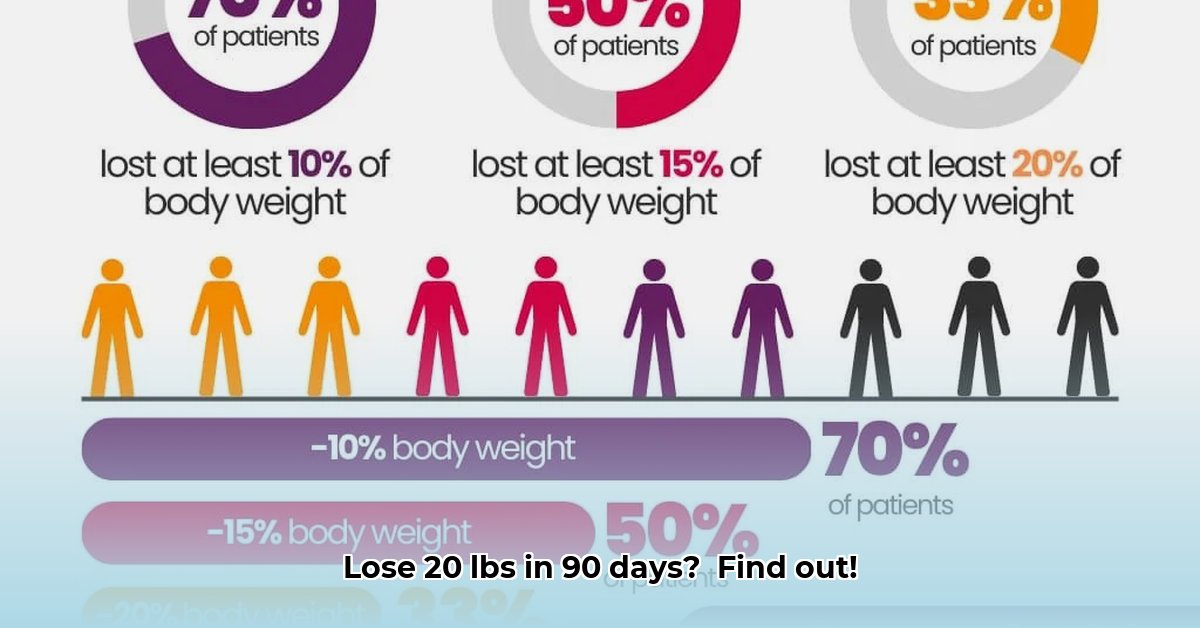
Shedding excess weight can be challenging. Programs like STL Med Weight Loss, promising significant weight loss through telemedicine and GLP-1 medications (drugs that help manage appetite and blood sugar), attract attention. But are the claims realistic? This review analyzes STL Med Weight Loss, weighing its pros and cons, examining the supporting evidence, and offering practical advice for sustainable weight management.
Understanding STL Med Weight Loss
STL Med Weight Loss employs a telemedicine approach, combining virtual consultations with GLP-1 medications to facilitate weight loss. The program's website advertises impressive results: an 80% success rate, with participants losing 15-20 pounds in 90 days and an average of 20% total weight loss over a year. While these figures are eye-catching, a critical assessment is necessary.
Weighing the Pros and Cons
Before considering STL Med Weight Loss, let's analyze its advantages and disadvantages objectively.
Pros:
- Unmatched Convenience: Telemedicine eliminates the need for travel and lengthy appointments, fitting weight loss support into busy schedules.
- Reportedly Impressive Results: Many users report significant weight loss, which is a key benefit of the program. The accessibility of the telemedicine platform vastly increases its reach to a larger population.
- Broad Accessibility: Telemedicine removes geographical barriers, making weight loss support accessible to a wider audience.
Cons:
- Lack of Scientific Validation: The program's claims lack robust, peer-reviewed scientific evidence. Independent studies are necessary to confirm the effectiveness and safety of this method.
- Telemedicine Limitations: Remote health monitoring presents challenges. Thorough assessment and timely intervention for potential issues may be difficult purely through telehealth. Self-reported data inherently introduces subjectivity and potential inaccuracies.
- GLP-1 Medication Side Effects: While beneficial, GLP-1 medications can cause side effects (e.g., nausea, diarrhea). Effective management of these side effects within a telemedicine framework requires careful consideration and clear protocols, which require further examination.
Examining the Data: A Critical Perspective
The program's advertised success rates and weight loss figures require closer scrutiny. The absence of detailed statistical analysis, such as standard deviations and confidence intervals, limits the robustness of these claims. Without this additional data, it's difficult to evaluate the true effectiveness and consistency of the program's results. Furthermore, independent confirmation of the reported high patient satisfaction rates is essential.
The Role of GLP-1 Medications
STL Med Weight Loss utilizes GLP-1 medications as a core component. These medications aid weight loss by regulating appetite and enhancing insulin sensitivity. However, potential side effects, such as gastrointestinal distress, necessitate careful monitoring and management, especially within a telemedicine setting. The program's approach to managing these side effects needs more detailed explanation and verification.
A Balanced Conclusion: Cautious Optimism
STL Med Weight Loss offers a potentially beneficial weight loss solution, particularly with its telehealth convenience and reported weight loss success. The impressive short-term results are noteworthy. However, the lack of comprehensive, peer-reviewed research necessitates a cautious approach. Until rigorous scientific backing confirms the program's long-term efficacy, safety, and suitability for various individuals, skepticism is warranted. This program should be considered as one option among many available weight loss strategies. Consulting a healthcare professional before starting any weight loss program is strongly advised.
Managing Side Effects of Telemedicine GLP-1 Weight Loss
Key Considerations:
- GLP-1 medications, while effective for weight loss, frequently cause side effects.
- Telemedicine provides a convenient way to manage these side effects.
- Proactive monitoring, dietary adjustments, open communication, and comprehensive lifestyle changes are paramount for success.
Understanding GLP-1 Side Effects
GLP-1 medications, while effective for weight loss, commonly cause gastrointestinal side effects like nausea, diarrhea, constipation, and vomiting. Less frequent but possible side effects include abdominal pain, bloating, heartburn, fatigue, and blood sugar fluctuations.
Telemedicine's Role in Side Effect Management
Telemedicine facilitates personalized monitoring and allows for timely adjustments to medication or treatment plans. Regular virtual check-ins enable healthcare providers to address concerns, answer questions, and make necessary modifications to mitigate potential adverse effects. This personalized interaction improves compliance and outcome.
Strategies for Proactive Management
Hydration: Ample water intake aids digestion and minimizes constipation.
Dietary Modifications: Small, frequent, easily digestible meals, potentially with a personalized meal plan from your provider, are recommended. Increase fiber gradually.
Medication Timing: Experiment with medication timing; taking it with food may reduce nausea.
Symptom Tracking: Meticulously document symptom severity, frequency, and potential triggers for informed communication with your healthcare provider.
Open Communication: Report any bothersome side effects to your healthcare provider immediately for advice, dosage adjustments, or alternative medications.
Holistic Lifestyle: Exercise, stress reduction, and adequate sleep contribute to overall health and medication tolerance.
Long-Term Success
Maintaining a healthy lifestyle beyond initial weight loss is crucial. This involves a balanced diet, regular exercise, and ongoing health monitoring via telehealth. Regular virtual check-ups help track progress and address any long-term issues. This continuous support is vital to maximizing the benefits of the program and maintaining the results.